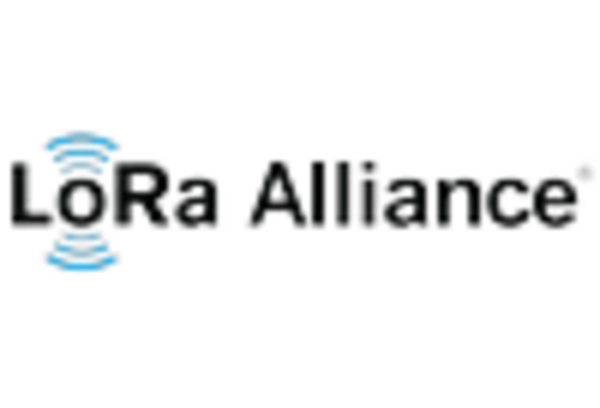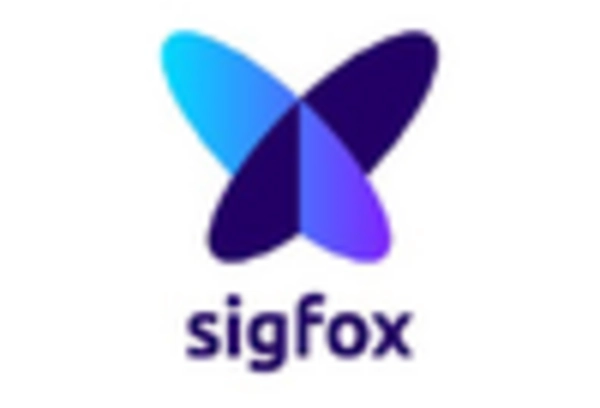Integration with 5G Networks
The low power-wan market is poised for growth due to the integration with emerging 5G networks. As 5G technology rolls out across the US, it is expected to enhance the capabilities of low power-wan solutions by providing faster data transmission and improved connectivity. This integration allows for more devices to connect simultaneously, which is crucial for applications in smart cities and industrial IoT. The 5G market is anticipated to reach $700 billion by 2030, indicating a substantial opportunity for low power-wan technologies to complement this growth. As industries leverage the benefits of 5G, the low power-wan market is likely to expand, offering innovative solutions for various applications.
Expansion of Smart Agriculture
The low power-wan market is significantly influenced by the expansion of smart agriculture practices. Farmers are increasingly adopting IoT solutions to monitor soil conditions, crop health, and weather patterns. These applications require reliable, low-power connectivity to transmit data from remote sensors. The agricultural sector in the US is projected to invest approximately $5 billion in IoT technologies by 2026, indicating a robust growth trajectory. This investment is expected to drive demand for low power-wan solutions, as they provide the necessary infrastructure for efficient data collection and analysis. As smart agriculture continues to evolve, the low power-wan market is likely to benefit from this technological shift.
Growth in Asset Tracking Solutions
The growth driven by the increasing need for asset tracking solutions in the low power-wan market. across various industries. Companies are seeking efficient ways to monitor and manage their assets, from inventory in warehouses to equipment on construction sites. Low power-wan technologies offer a cost-effective means to track assets in real-time, reducing losses and improving operational efficiency. The asset tracking market is expected to reach $30 billion by 2025, with a significant portion attributed to low power-wan applications. This trend suggests that as businesses prioritize asset management, the low power-wan market will continue to expand, providing essential connectivity for tracking systems.
Rising Demand for Energy Efficiency
The low power-wan market is experiencing a notable surge in demand for energy-efficient solutions. As organizations and municipalities strive to reduce their carbon footprints, the adoption of low power-wan technologies becomes increasingly attractive. These technologies enable devices to operate on minimal energy, which is particularly beneficial in remote or hard-to-reach locations. According to recent data, energy-efficient solutions can reduce operational costs by up to 30%, making them a financially viable option for many sectors. This trend is likely to continue as more stakeholders recognize the long-term benefits of energy conservation. Consequently, the low power-wan market is positioned to grow as it aligns with broader sustainability goals across various industries.
Advancements in Smart Metering Technologies
The low power-wan market is being propelled by advancements in smart metering technologies. Utilities are increasingly deploying smart meters to enhance energy management and improve customer service. These meters require low power connectivity to transmit data efficiently, making low power-wan solutions ideal for this application. The US smart meter market is projected to grow at a CAGR of 10% through 2027, driven by the need for real-time data and improved grid management. As utilities invest in modernizing their infrastructure, the low power-wan market is likely to see increased adoption, facilitating better energy consumption monitoring and management.

















Leave a Comment